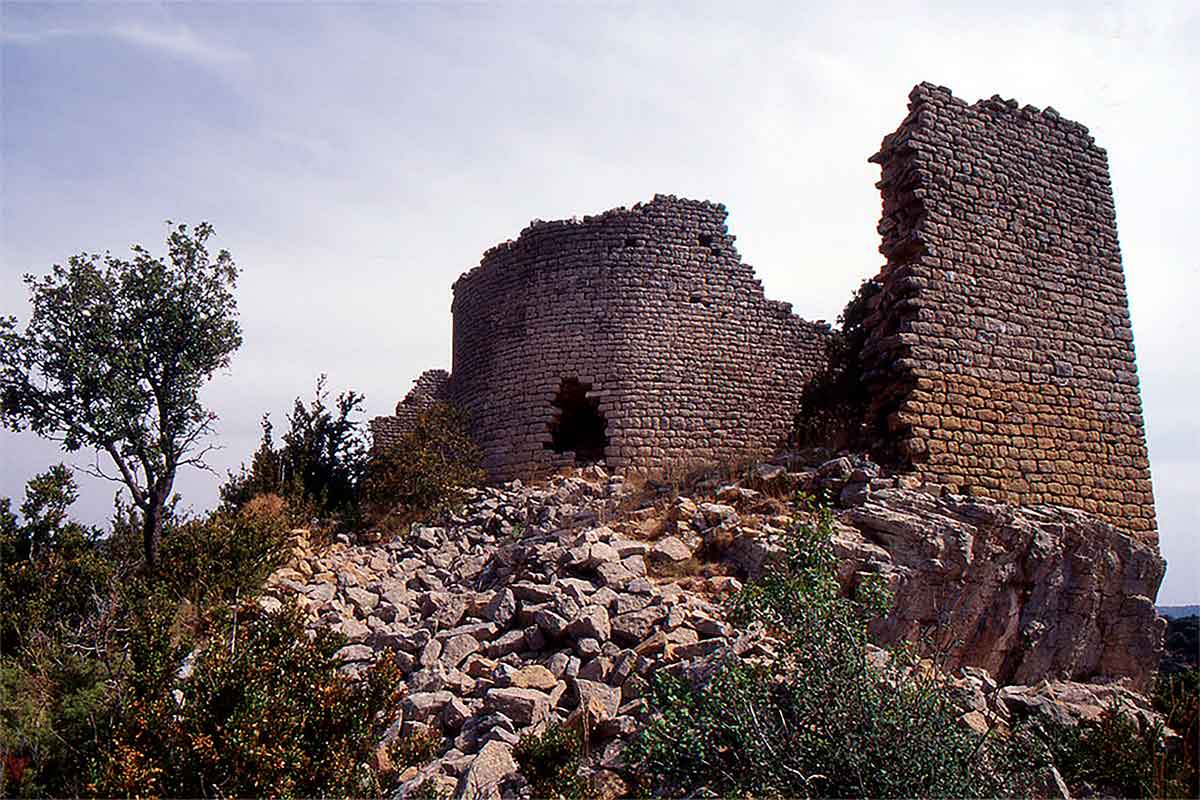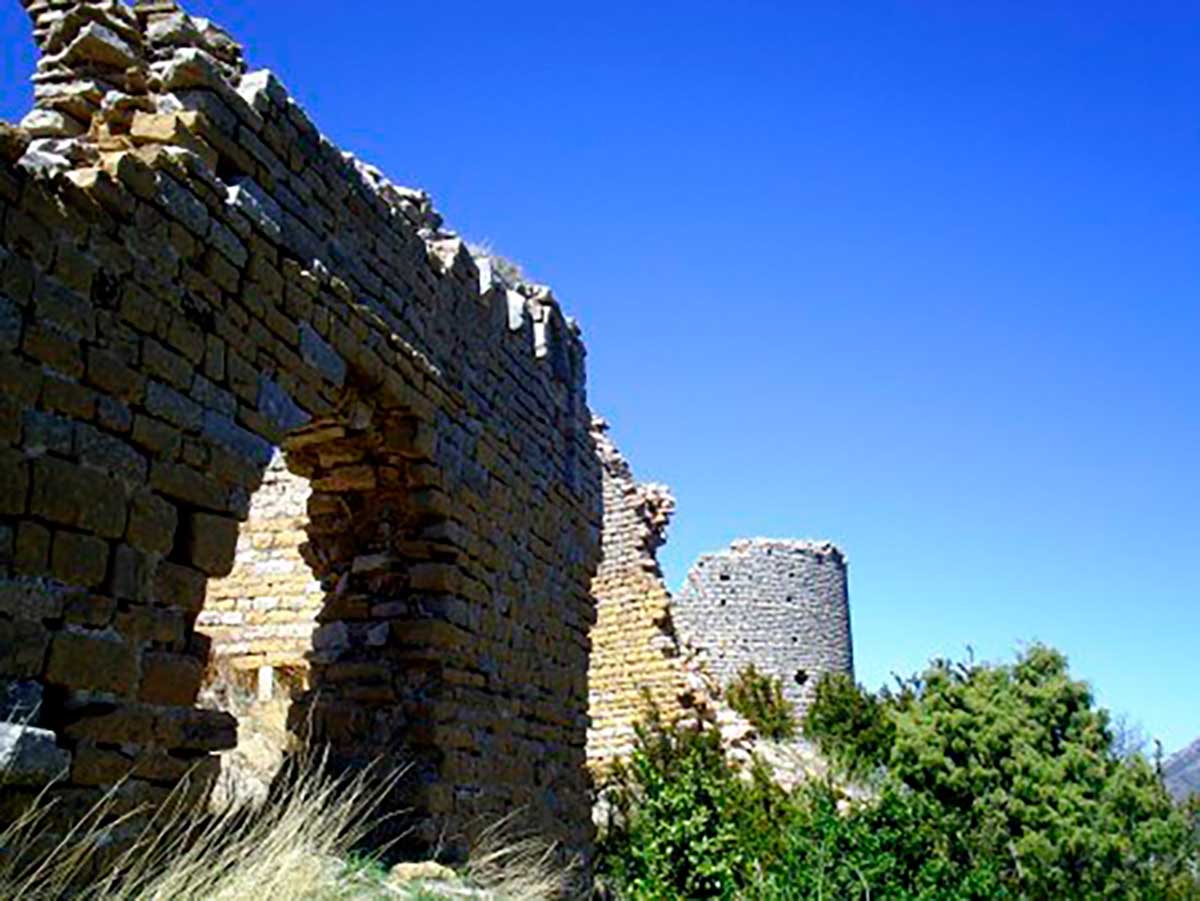
The Castle of Sant Lorenç de Àger: stone silence over the valley
In the middle of the silence of the cliffs of El Montsec, on the natural border of La Noguera and La Ribagorça, stands the Castle of Sant Llorenç d’Àger, also known as Sant Llorenç de la Roca. This monumental complex, today in ruins but still majestic, is one of the oldest and most unique testimonies of the Christian presence in the Àger valley during the Reconquest. Located on top of a limestone rock spur overlooking the Noguera Ribagorçana river, it combines military, religious and territorial control functions, in a natural setting as impressive as it is inaccessible.
Origins and history of the castle
The castle of Sant Llorenç is documented as early as the eleventh century, linked to the repopulation and fortification campaigns promoted by the nobleman Arnau Mir de Tost, the great conqueror of the Àger valley. This territory, until then under Muslim rule, became a key point within the County of Urgell, and the construction of castles such as Sant Llorenç became a strategic priority.
However, it is believed that the place had already been previously occupied, probably as an Andalusian watchtower or late antique settlement. The place offered a privileged view of the entire valley and controlled possible access routes between Montsec and the plains of La Noguera.
The complex remained active as a religious and military centre until the fourteenth century, when it was gradually abandoned. A part of the place was reused as a place of worship and, later, as a rural surveillance point.
Architecture and preserved elements
Despite the abandonment, the remains of the castle and monastery of San Lorenzo are still visible and, in some cases, spectacular. The complex, quite extensive, adapts to the topography of the rock and has a stepped structure.
The walled enclosure
It is formed by a wall with several semicircular towers, up to 4 meters high in some sections. Access to the complex was through a fortified portal with a flanking tower.
Military Tower and Outbuildings
The main tower, probably a watchtower, is partially preserved. Inside the enclosure you can see remains of rooms and warehouses, organized around an old cobbled street and a cistern.
The Romanesque church
The complex included a chapel with a single nave, of Lombard Romanesque construction, with blind arches, a semicircular apse and a stone roof. This church, despite being partially demolished, still gives a glimpse of the elegance of its forms and its spiritual function within the whole.
Geology and natural environment
The castle stands on top of a large limestone rock, which gives it an exceptional natural defence. The cliffs surrounding the enclosure fall vertically into the river, and the feeling of isolation is absolute. This also explains the traditional name of Sant Llorenç de la Roca.

Historical and spiritual importance
The castle and its church were part of a system of defense and evangelization of the territory. With him, Arnau Mir de Tost reinforced the Christian presence on the Andalusian border and established stable repopulation centres. It is likely that Sant Llorenç functioned as a rural priory, linked to the canonical of Sant Pere d’Àger, with which it shared a model and objectives.
The place also had a symbolic and spiritual function: from the top, the church of San Lorenzo projected an image of dominion and faith over the valleys that had been conquered by Christianity.
A testimony of time and stone
To visit the Castle of Sant Lorenç is to take a trip to the past, where the border was not a line on the map but a lived, defended and pre-gated limit. It is an experience for those who seek silence, history, nature and memory. Despite the state of ruin, this place tells us about the effort of the first resettlers, the faith of the religious communities and the strategic value of a key territory in the heart of El Montsec.


